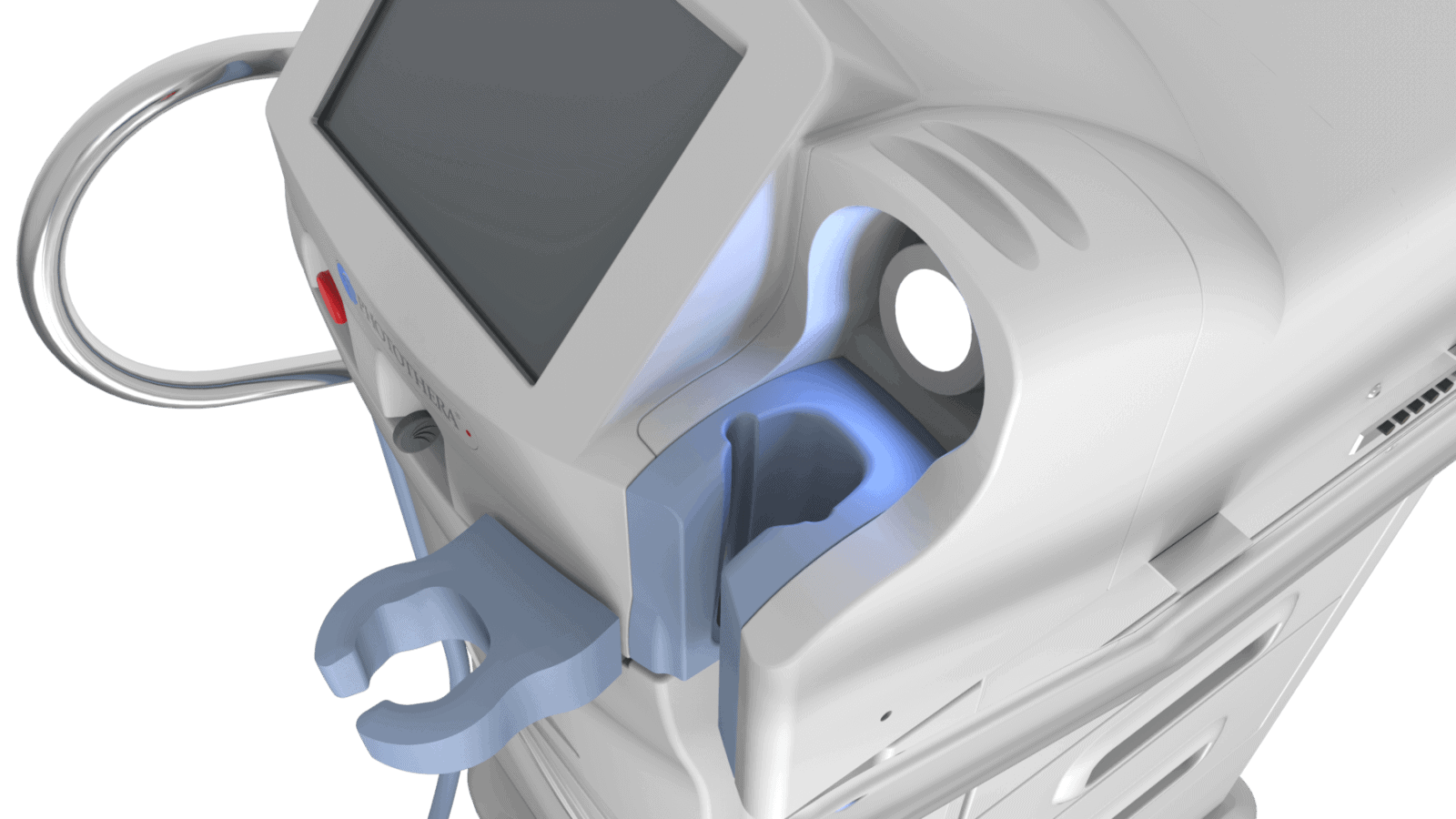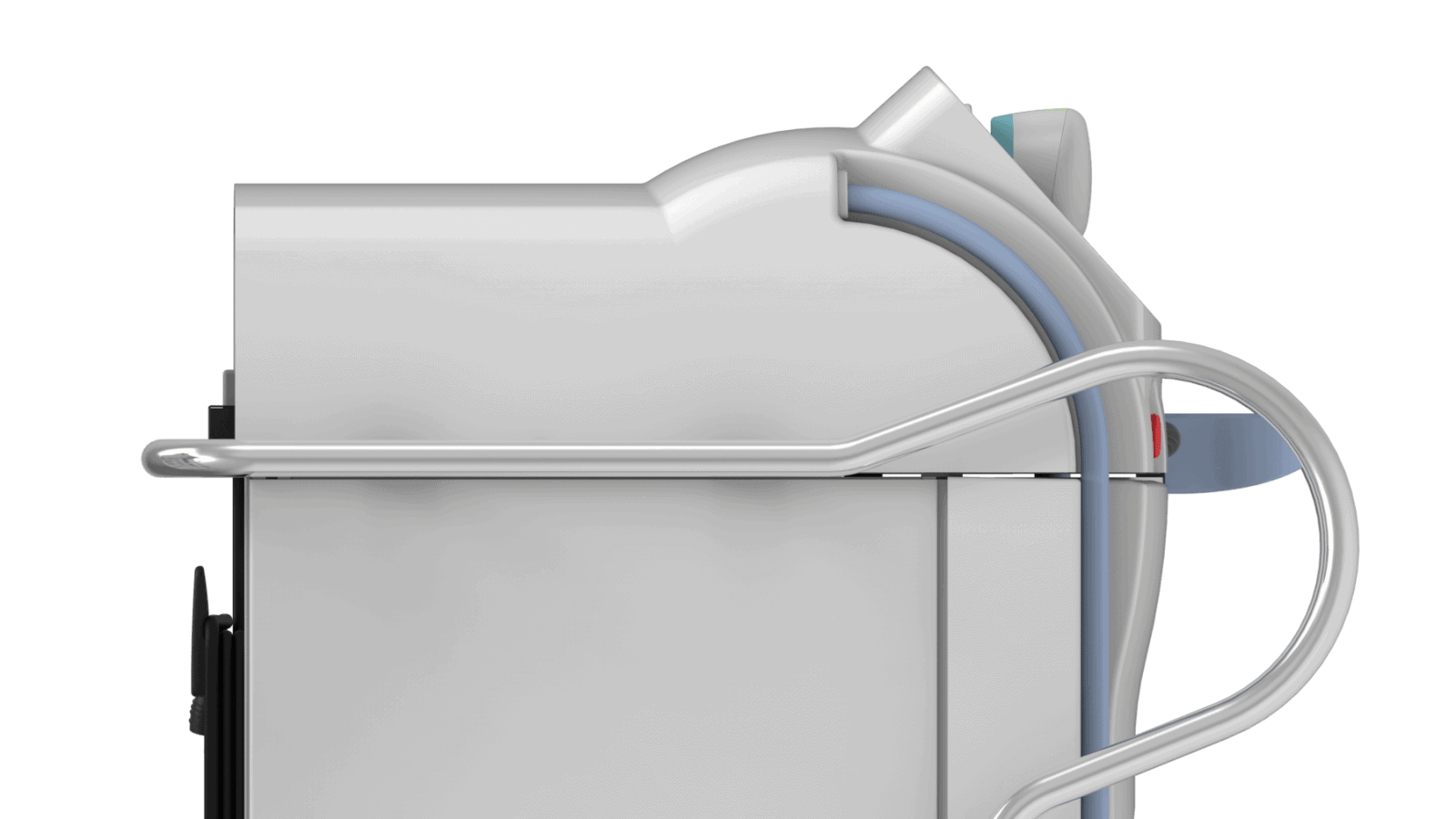PhotoThera
The NeuroThera System, De Taboada said, consists of a fiber optic cable, a handpiece, a cap that guides the laser energy to treatment locations on the scalp, accessories and a cart for portability.
When the system establishes contact with the patient’s completely shaved head, detectors in the handpiece trigger it to emit a specific wavelength of near-IR energy. “A total treatment regimen consists of treating 20 locations on the head for two minutes at each location for a total of 40 minutes of nominal treatment time,” De Taboada said.
The mitochondrial photoreceptor cytochrome C oxidase absorbs near-IR and drives adenosine triphosphate (ATP) formation by oxidative phosphorylation, he explained. The hypothesis goes that improved energy metabolism leads to mitigation of cell death in the stroke-affected tissue and to the enhancement of neuro-recovery mechanisms.
The improved neurometabolism could be beneficial not only in stroke treatment, but also in treating traumatic brain injury, and Parkinson’s and Alzheimer’s diseases, he said.
Therapeutics
Electrical Engineering
Industrial Design
Mechanical Engineering
Model Making
Regulatory Affairs
UI Design









